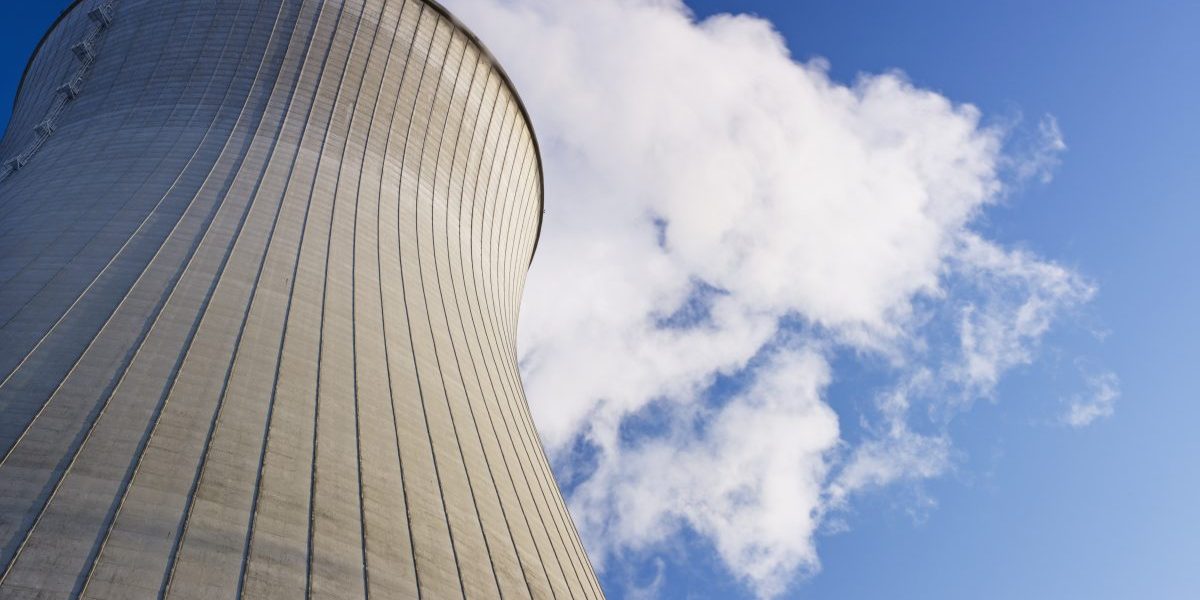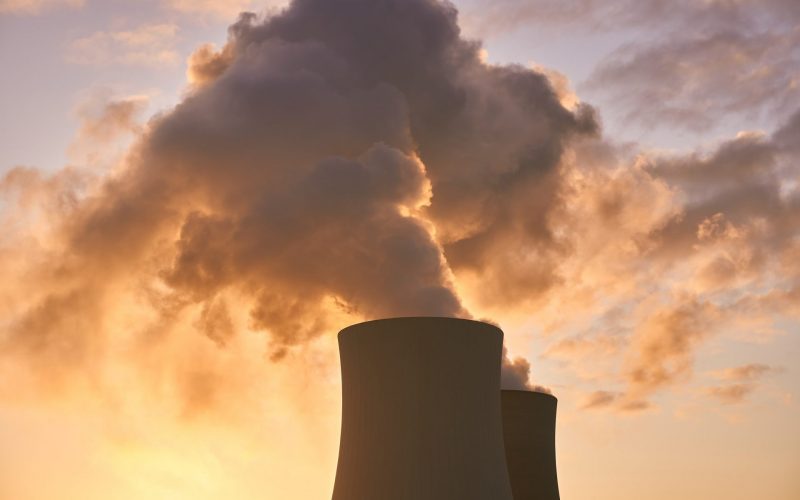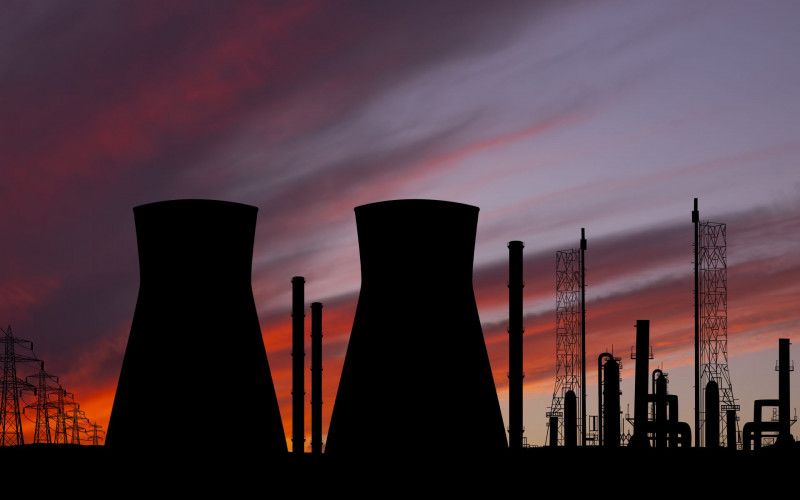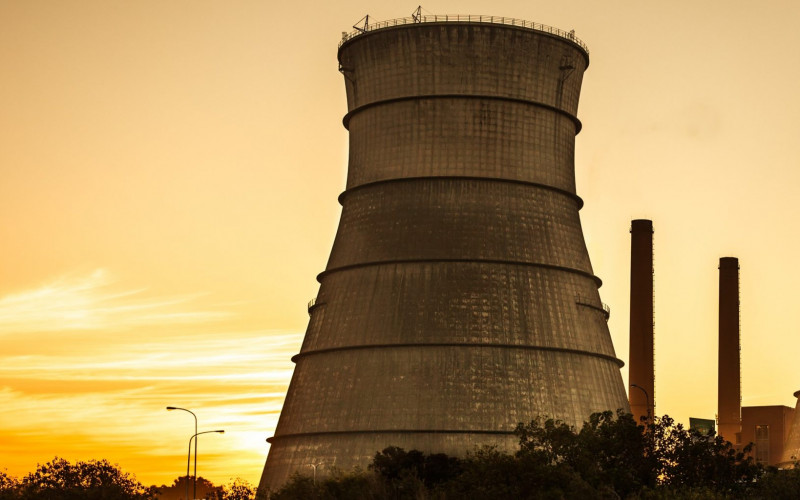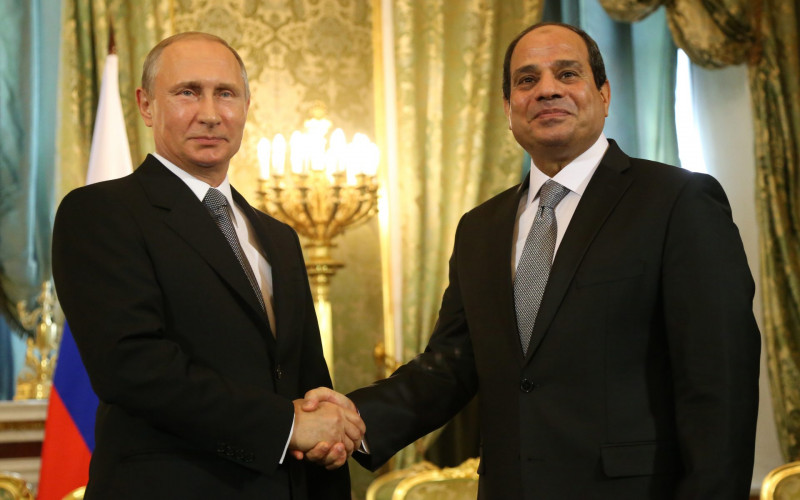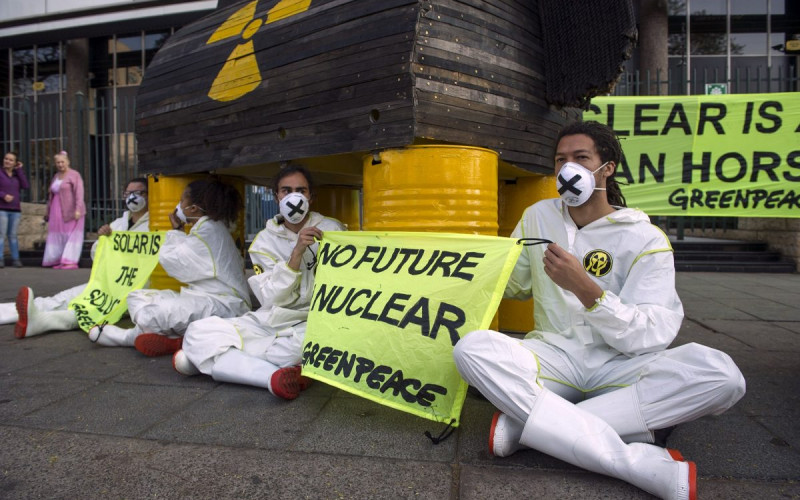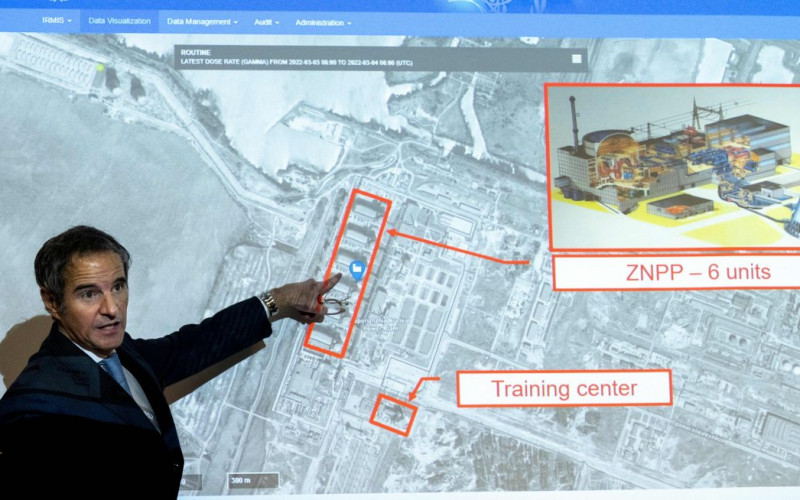Recommendations
- Ensure a stable political environment for the development of a nuclear power programme.
- Take concrete steps to ensure follow-through on commitments to develop a nuclear power programme and implement IAEA recommendations.
- Continue nuclear research and training programmes.
- Embed a strong legal and regulatory nuclear framework from the start.
Executive summary
Electricity supply in Ghana has been outstripped by electricity demand for decades. This has led to numerous energy crises, with negative consequences for the economy. Economic development is valued and the country aims to become highly industrialised within the next four decades. In order to accomplish this, Ghana’s electricity problem must be addressed. Effectively reviving a decades-old aspiration, the government of Ghana has shown renewed commitment to the implementation of a nuclear power programme and the use of nuclear power to drive economic development. Significant steps have been taken to realise this goal, but there is still much work to be done.
Introduction
For decades Ghana has tried to reform its energy sector and add nuclear energy to the mix. This project is driven primarily by the quest for economic development and the demands placed on the energy sector by a rapidly ‘increasing population, industrialisation and urbanisation’,1Ephraim Bonah Agyekum, Michael Nii Sanka Ansah and Kwame Bright Afornu, “Nuclear Energy for Sustainable Development: SWOT Analysis on Ghana’s Nuclear Agenda”, Energy Reports 6 (2020): 107–115, 107, http://www.sciencedirect.com/science/ article/pii/S2352484719311023; BJB Nyarko, EHK Akaho and I Ennison, “Nuclear Power for Future Electricity Generation in Ghana: Issues and Challenges” (IAEA-CN-164-2S03, International Atomic Energy Agency, Vienna, 2011), https://wwwpub.iaea.org/MTCD/publications/PDF/P1500_CD_Web/htm/pdf/topic2/2S03_B.J.B.%20Nyarko.pdf.all of which have been linked to the energy crises the country has been experiencing over the years.
Ghana faced its first energy crisis necessitating ‘power rationing’ from 1983–1984, again in 1997–1998, 2003 and 2006–2007, and between 2011 and 2017.2Ebenezer Nyarko Kumi, “The Electricity Situation in Ghana: Challenges and Opportunities” (Policy Paper 109, Center for Global Development, Washington DC, 2017), 8, https://www.cgdev.org/sites/default/files/electricity-situation-ghana-challenges-andopportunities.pdf.Electricity demand outstripped supply for decades. At one point the annual increase in demand was estimated at 7%, largely as a result of ‘population growth, [the] economic aspiration of the country and the extension of electricity to rural areas’.3Nyarko, Akaho and Ennison, “Nuclear Power for Future”, 1.Periods of interrupted power supply had a negative impact on the development of the country and stymied economic progress. In 2014 alone, this resulted in a loss of gross domestic product of $680 million.4Kumi, “The Electricity Situation in Ghana”.
In 2020 the situation was quite different. Ghana now faced economic setbacks as a result of excess electricity supply. Power outages in 2014 had had a particularly negative effect on mining and manufacturing and directly contributed to high levels of unemployment in these sectors.5Samuel Asumadu Sarkodie, “Lessons to Be Learnt from Ghana’s Excess Electricity Shambles”, The Conversation, August 5, 2019, https://theconversation.com/lessons-to-be-learnt-from-ghanas-excess-electricity-shambles-121257.Responding to the economic fallout, the government turned to the private sector. From 2014 to 2017, 43 power purchasing agreements were signed between the government and three independent power producers.6Sarkodie, “Lessons to be Learnt”.The additional electricity supplied by these independent power producers meant that supply could finally catch up with demand.
However, as a result, supply now greatly outweighs demand and the ‘take-or-pay’ contracts signed by the government stipulate that the total generated electricity supply has to be bought – whether it is consumed in full or not.7Sarkodie, “Lessons to be Learnt”.The excess electricity generated is currently costing the government more than $500 million per year.8Sarkodie, “Lessons to be Learnt”.
The Ghanaian government, supported by the National Development Planning Commission, has introduced plans to boost economic development. Within the next four decades it aims to establish a highly industrialised economy. According to Vice President Mahamudu Bawumia, nuclear energy will be an asset to Ghana, contributing positively to the country’s development.9“Ghana Vice President Confirms Nuclear Commitment”, World Nuclear News, August 2, 2019, https://www.world-nuclear-news.org/Articles/Vice-President-confirms-Ghana-nuclear-commitment.
Electricity production in Ghana: A brief history
Commercial electricity production in Ghana began in 1914 (when it was still under colonial rule) with various diesel generator power plants used primarily by the railway sector. These diesel power plants were later replaced by hydropower as the primary source of electricity.10Kumi, “The Electricity Situation in Ghana”Currently, the country’s energy sector consists mainly of hydroelectric and thermal power plants, with a few solar and biogas power plants included in the mix.
Hydropower plants were the main suppliers of electricity in Ghana, but thermal power plants have gradually become more popular and are now responsible for some 63% of the country’s total installed capacity.11IAEA, “Country Nuclear Profiles (2018 Edition): Ghana” (Vienna, IAEA, 2018), https://wwwpub.iaea.org/MTCD/Publications/PDF/cnpp2018/countryprofiles/Ghana/Ghana.htm.Thermal power plants are expensive to operate, but the discovery of natural gas and oil reserves in Ghana in 2007 alleviated some of the operating costs. However, with these natural resources predicted to be depleted by 2045, Ghana is looking for sustainable and cost-effective energy production.12IAEA, “Country Nuclear Profiles”.
Electricity access and the potential of nuclear energy
Aware of the links between sustainable economic development, widespread electrification and a reliable electricity supply, the government set up the National Electrification Scheme (NES) in 1989. This project was intended to improve the country’s electricity access rate (15–20% at the time) through the NES Master Plan, ultimately reaching an electricity access rate of 100% by 2020.13Kumi, “The Electricity Situation in Ghana”.Overall, the NES has been successful and the electricity access rate in Ghana has improved significantly. However, the project has not achieved its end goal of universal electricity access.
According to 2019 estimates, some 85% of Ghana’s population have access to electricity.14Government of Ghana, Energy Commission, National Energy Statistics 2000–2019 (Accra: Energy Commission, 2020), http://www.energycom.gov.gh/files/ENERGY%20STATISTICS-2020.pdf.Since the start of the NES project, the electricity access rate has increased on average by 2.6% a year, but this has been insufficient to ensure universal access within the initial timeframe. Recent projections indicate that 2022 is a more realistic target.15Kumi, “The Electricity Situation in Ghana”.While the NES project is government-driven, it has significant room for community involvement. Through the Self-Help Electrification Scheme (SHEP), electricity access is accelerated through direct engagement with communities. When communities supply ‘low voltage electricity poles and electricity meters’, the government can accelerate electricity access and save money in the process, since communities themselves provide some of the equipment.16Kumi, “The Electricity Situation in Ghana”, 8.
As a result of unstable power supply in 2007, the government established the Nuclear Power Committee. The committee had the two-fold task of investigating whether nuclear power would be a feasible option for Ghana, and planning the implementation of a nuclear energy programme. It advised that nuclear power was worth pursuing and provided a roadmap for the establishment of a nuclear power plant in the country by 2018.17IAEA, “Country Nuclear Profiles”.
Nuclear energy: Revisiting a decades-old aspiration
Interest in nuclear technology dates back to Ghana’s pre- and post-independence history. Researchers at the University of Ghana experimented on monkeys with radio strontium in 1952, and since then nuclear research for peaceful applications has expanded to include ‘agriculture, hydrology, medicine, research and industry’.18ET Glover and JJ Fletcher, “National Waste Management Infrastructure for the Safe Management of Radioactive Waste in Ghana” (paper, Waste Management 2000 Conference, Tucson, February 27 – March 2, 2000), 1, http://citeseerx.ist.psu.edu/viewdoc/downloaddoi=10.1.1.621.9790&rep=rep1&type=pdf.Since the early 1960s Ghana has explored the use of nuclear technology for electricity generation. The country’s first president, Dr Kwame Nkrumah, advocated the use of nuclear power for development in Africa and started the Kwabenya Nuclear Reactor Project (1961) and the Ghana Atomic Energy Commission (GAEC, 1963).19IAEA, “Country Nuclear Profiles”.The Kwabenya Nuclear Reactor Project was intended to introduce nuclear science and technology into the country, and to exploit nuclear energy in its peaceful applications for the solution of problems of national development’.20IAEA, “Country Nuclear Profiles”.
Currently, nuclear technology is used at Ghana’s nuclear research reactor and a number of medicine and radiotherapy facilities.21Glover and Fletcher, “National Waste Management Infrastructure”The Ghana Research Reactor-1 (GHARR-1) has a thermal power capacity of 30kW and has been in commission since 1994. It is used for training and educating nuclear researchers and scientists,22IAEA, Research Reactors in Africa (Vienna: IAEA, 2011), https://www.iaea.org/sites/default/files/18/09/research-reactors-in-africa.pdfconducting research on nuclear waste management, analysing water sources in the vicinity of mines, and studying soil fertility, among others.23IAEA, Research Reactors in Africa.
When it was first commissioned in 1994, GHARR-1 operated on highly enriched uranium (HEU) fuel. Following a conversion process requested by Ghana in 2014, GHARR-1 was successfully converted to low enriched uranium (LEU) fuel.24Sandor Tozser, “Supporting Nuclear Non-Proliferation: Ghana Converts Research Reactor from HEU to LEU Fuel”, IAEA, August 29,2017, https://www.iaea.org/newscenter/news/supporting-nuclear-non-proliferation-ghana-converts-research-reactor-from-heu-toleu-fuel#:~:text=Ghana%20has%20successfully%20completed%20the,risks%20associated%20with%20HEU%20fuel.It has been widely praised for this decision, since the conversion from HEU to LEU eliminates the opportunity to build nuclear weapons. The conversion of GHARR-1 was made possible through the collective efforts of the GAEC, the International Atomic Energy Agency (IAEA), the China Atomic Energy Authority and the US Department of Energy’s National Nuclear Security Administration.25Tozser, “Supporting Nuclear Non-Proliferation”.
While GHARR-1 is a necessary component of the envisioned nuclear power programme in Ghana, it is also linked to ongoing land disputes with roots in the country’s preindependence era. While GHARR-1 itself was only acquired in the early 1990s, construction at the site at Kwabenya began much earlier, in the 1960s. As per international regulations, the site of the reactor is surrounded by a 5km buffer zone,26Abena Dove Osseo-Asare, “‘Atomic Lands’: Understanding Land Disputes near Ghana’s Nuclear Reactor”, African Affairs 115, no. 460 (2016): 443.intended to provide protection against radiation. The buffer zone around GHARR-1 includes fertile land and has re-ignited old land disputes. The GAEC has also led many in the area surrounding GHARR-1 to believe that a reactor has been present at the site since the 1960s.27Osseo-Asare, “‘Atomic Lands’”.
Ghana has operated its nuclear reactor for more than two decades without incident, while also gaining significant experience in nuclear research and the application of nuclear technology in the health sector.28Elisabeth Dyck, “IAEA Reviews Progress of Ghana’s Nuclear Infrastructure Development”, IAEA, October 24, 2019, https://www.iaea.org/newscenter/news/iaea-reviews-progress-of-ghanas-nuclear-infrastructure-development.Nuclear technology is an important component of cancer care in Ghana, with dedicated radiotherapy facilities located in Accra and Kumasi.29Verna Vanderpuye and Naa Adorkor Aryeetey, “Cancer Radiotherapy in Ghana”, Cancer Control, http://www.cancercontrol.info/cc2016/cancer-radiotherapy-in-ghana/#:~:text=The%20life%20expectancy%20of%20Ghanaians,premier%20centre%20established%20in%201997. Brachytherapy, a form of cancer treatment whereby radiation is administered from within the body through implants, is done by the Sweden Ghana Medical Centre.30Sweden Ghana Medical Centre, “Brachytherapy”, https://www.sgmccancercentre.com/cancer-care/treatment-options/brachytherapy/.
Tracking Ghana’s progress towards nuclear energy
Despite Ghana’s positive track record on nuclear research, overall, it has struggled to set up a fully functioning nuclear power programme. Specifically, it has experienced numerous setbacks owing to political instability and a lack of follow-through on commitments. The Kwabenya Nuclear Reactor Project was meant to be the foundation of the country’s nuclear power programme. While preparations for its launch at the end of 1966 were underway, a military coup ousted Nkrumah and brought the project to an abrupt halt.31IAEA, “Country Nuclear Profiles”.An attempt to revive it in 1973 was derailed by another military coup that caused a ‘brain drain’, with many prominent nuclear scientists opting to leave the country.32IAEA, “Country Nuclear Profiles”.Then, after a democratic change in government in 2008, a renewed commitment to nuclear energy under the previous administration petered out.33IAEA, “Country Nuclear Profiles”.
In spite of these setbacks, Ghana intends to incorporate nuclear energy alongside existing sources of electricity by 2029.34Agyekum, Ansah and Afornu, “Nuclear Energy for Sustainable”.Considerable progress has been made through legislation and the establishment of dedicated bodies to oversee the development of the nuclear power programme.35IAEA, Mission Report on the Integrated Nuclear Infrastructure Review (INIR) – Phase 1 (Vienna: IAEA, 2017), 5, https://www.iaea.org/sites/default/files/documents/review-missions/inir-mission-to-ghana-january-2017.pdf.Notably, the GAEC took one of the first concrete steps towards the realisation of this programme when it asked the IAEA in 2015 to conduct a ‘Phase 1 Integrated Nuclear Infrastructure Review Mission (INIR)’.36IAEA, Mission Report on the Integrated, 6.
INIR missions are intended to connect IAEA-appointed experts with the bodies responsible for overseeing development of a nuclear power programme in the particular country requesting the review, as well as to facilitate the exchange of knowledge and advice.37IAEA, “IAEA Reviews Ghana’s Nuclear Power Infrastructure Development”, January 23, 2017, https://www.iaea.org/newscenter/pressreleases/iaea-reviews-ghanas-nuclear-power-infrastructure-development.These review missions rely largely on the IAEA Milestones Approach, a comprehensive guide for the establishment of nuclear power programmes that sets out three phases imperative to ‘developing the infrastructure necessary to support a nuclear programme’.38IAEA, Milestones in the Development of a National Infrastructure for Nuclear Power, IAEA Nuclear Energy Series NG-G-3.1 (Rev.1)(Vienna: IAEA, 2015), 5.
Upon the completion of each of these, a country achieves a milestone. The IAEA sent a team of experts to conduct the first INIR mission in Ghana on 16–23 January 2017.39IAEA, Mission Report on the Integrated.
The overall outcome of the review was positive, but the team did emphasise the following:40IAEA, Mission Report on the Integrated.
- more work is required for the completion of studies meant to inform the decision to implement nuclear power;
- the nuclear power programme should rest on a solid legal framework, and so the country is expected to review existing laws in order to accommodate the programme; and,
- the country needs to pay attention to the requirements for a Phase 2 review, and identify and lay the groundwork for engagement with stakeholders.
In 2019 the IAEA conducted a follow-up INIR in Ghana. It determined that of the 12 recommendations and eight suggestions offered at the end of the 2017 review, Ghana had completed eight and six respectively.41Dyck, “IAEA Reviews Progress”.
Conclusion
While Ghana may not yet boast universal electricity access, it is relatively close to achieving its goal.42Agyekum, Ansah and Afornu, “Nuclear Energy for Sustainable”.The country also has an historical interest in nuclear energy that has turned into practice despite various setbacks. With local thermal sources predicted to be depleted relatively soon and with the continuing impact of climate change, the country needs to expand its energy sources. Therefore, commitment to and follow-through on a nuclear energy programme is imperative if Ghana is to continue pursuing its vision of universal access to electricity and becoming a highly industrialised country.
Acknowledgement
SAIIA gratefully acknowledges the support of the Norwegian Ministry of Foreign Affairs for the Atoms for Africa’s Development project.

